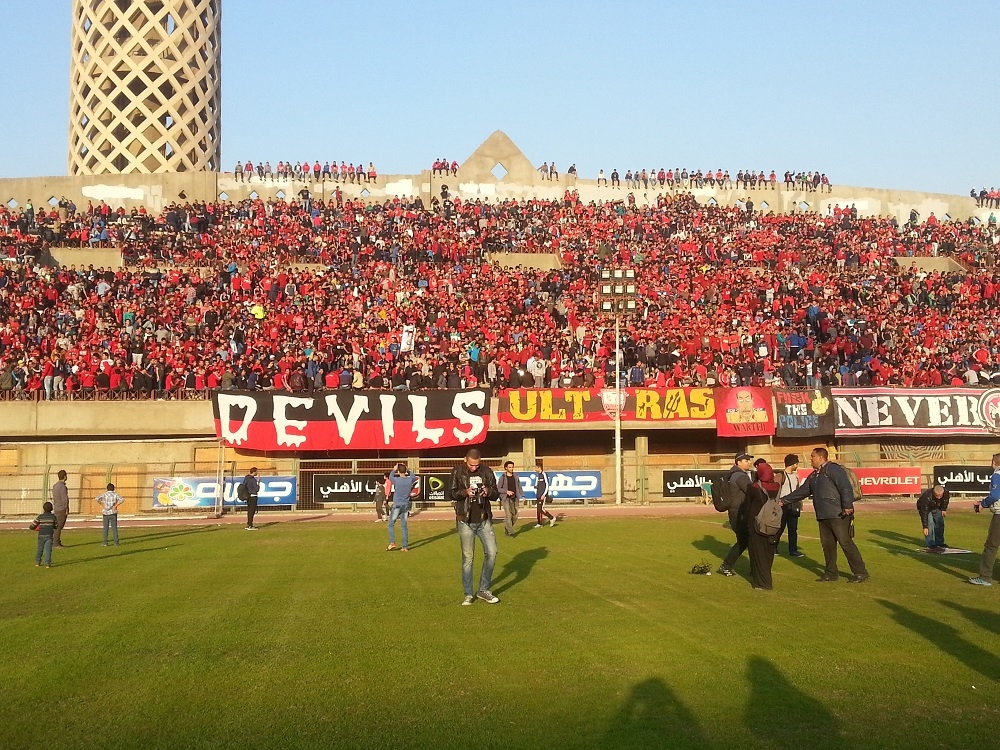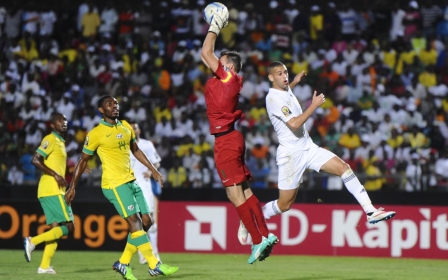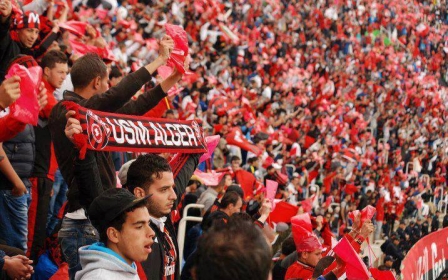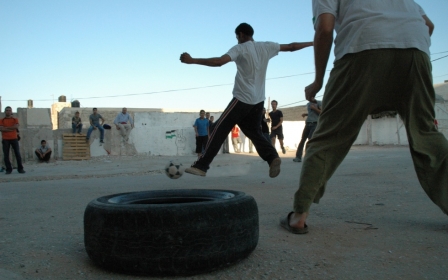Scars of Egypt's Port Said massacre refuse to fade

PORT SAID, Egypt - It was supposed to be an evening out with friends and relatives, a chance to vent and see your favourite football team, but before the night was over, 72 football fans had been killed and the Port Said stadium was left marred with blood, destined to be remembered as one of the darkest chapters in post-revolutionary Egypt.
On the night of 1 February 2012, the game between Port Said’s al-Masry and the Cairo-based al-Ahly team was almost over with an unexpected result of 3-1 for the home team when, according to several testimonies, hundreds of Green Eagles (al-Masry) fans attacked Ahlawy (al-Ahly) supporters with sticks, knives, metal boards and swords. The police stood by as the bloodshed began to unfold and did nothing. By some accounts they even fired at some of the unarmed supporters in the crowd.
“I will never forget that night,” said Ayman, an Ahlawy supporter who did not want to use his real name for security reasons.
“Soon after the [pitch] invasion, the stadium lights were turned off. The exits had also all been locked since the beginning of the match, so we were trapped.”
Ayman eventually lit a flare and started fighting, but he was quickly overwhelmed by the mob that knocked him to the floor and began beating him, before leaving him for dead.
Once they were gone, Ayman lay on the floor motionless until he noticed that some fellow football fans – panicking and desperate to save their lives – had smashed open one of the exit doors. He ran over the lifeless corpses of his friends to the gate and managed to flee to safety.
The incident occurred shortly after the first parliament elections following the 2011 overthrow of long-time President Hosni Mubarak were held, and it sparked anger and outrage across Egypt.
Soon after the massacre, the Ministry of Interior made a statement shifting the blame onto the football fans, and accusing them of purposefully wanting to escalate the situation and spread chaos, but the Ahlawy faithful have refused to accept the official line.
In the next four days, the streets leading to the Ministry of Interior in Cairo were blocked off by furious Ahlawy fans who harshly confronted security forces and demanded the removal of people they accused of being Mubarak loyalists within the ministry, but little was done to heed their calls.
The Ahlawi
The incident in the coastal Mediterranean town close to the Suez Canal has proved so divisive because many Cairo-based Ahlawi supporters believe they were purposefully targeted and three years on, many still insist that they were singled out for their role in fighting security forces during the 2011 revolution.
Ahlawy, indeed, claims to be the second-biggest “civil” society organisation after the Muslim Brotherhood, even though they insist that they are not affiliated with any political party and only focus on football.
“We love football and hate police forces. We are not interested in fighting for political reasons, unless they are not related to our passion and freedom,” said Ayman.
The so-called football ultras - extreme football fans - were born in 2007, when brutal police action began to radicalise the fans during Mubarak’s presidency and started turning stadiums into the ideological battlegrounds where opponents felt they could begin to challenge the state.
“Even though the Egyptian authorities see the incident as a football riot, I think there are too many elements, like the locked gates, or the lights being turned off, that lead me to think it was not a coincidence,” said James Dorsey, professor of international relations at Nanyang Technological University in Singapore and author of The Turbulent World of Middle East Soccer’
However, testimonies collected by the Cairo-based NGO Egyptian Initiative for Personal Rights (EIPR) also talk about the very lax security measures adopted at the match. According to the statements, fans were not searched before entering the grounds and the main stadium entrance was left open without security.
One year after the incident, a Cairo court sentenced 21 Green Eagles fans to death, while 52 others received several years in jail or are still waiting for the verdict. Five of them were sentenced to life in prison while six were sentenced to 10 years.
Nine Port Said policemen were among the defendants, but only two – the director of criminal research in Port Said and the director of stadium security – have been sentenced and are currently serving 15 years in jail.
The verdict had been initially cheered by Ahlawi fans and families of the Cairo victims. However, as the court failed to convict more policemen, their anger soon exploded. At least seven people died all over the country as some football fanatics were not happy with the sentence.
“We still believe there are much more security forces who deserve to be punished. They were in the stadium, but did nothing to protect us,” said Mahmoud, a young al-Ahly fan.
“They stepped aside and let people reach our zone,” he added.
The sentence has also been rejected by Port Said citizens, who accuse the authorities of sentencing the wrong people and looking for scapegoats. On 26 January 2013, thousands of people went to the city streets to reject the verdict. Harsh confrontation with security forces broke out and at least 42 people were killed, including two police officers. A further 874 were wounded.
During the whole month of February 2013, Port Said became a ghost city as shops were closed and strikes paralysed all the local businesses and factories.
“The rivalry between al-Masry and al-Ahly is not something new, but we never had this death toll in our football history,” said Mohammed Khader, an independent lawyer and a former Port Said resident.
Khader also explained that Egyptian media, in the weeks before the match, instilled fear by saying that something bad was on the horizon. According to him, this media attitude was not usual and he speculates that remnants of the old elite were using media against the Ahlawy to weaken their combative spirit.
The official investigations into the affair have also left a lot of questions unanswered, Khader said.
According to the authorities, the 72 Ahlawy suffocated while trying to escape, but no autopsies have ever been carried out.
“We have neither pictures, nor videos of the stadium immediately after the massacre that might help us to understand what happened that night,” Khader said.
“I think what happened in Port Said was not a spontaneous act and Egyptian police forces are responsible for the tragedy as they did not contain the al-Masry fans,” said Dorsey.
“Maybe we will not thoroughly know why they did not step in, but there is no doubt that they were willing to tolerate a high degree of violence."
According to Dorsey, however, even if two policemen have been jailed, investigations failed to involve security forces at national level and focused just on the local level. In February 2014, the Court of Cassation, Egypt’s highest court, accepted the retrial of all the 73 defendants. It is unclear what will happen and the cases are ongoing.
One of the main requests of Egyptians during and after the 2011 revolution was a radical reform of the police system, perceived as an excessive authoritarian tool in the hands of the state.
However, according to the EIPR and the Hisham Mubarak Law Centre, no significant steps were taken to address people’s demands.
“After the acquittal of former president Mubarak and his cronies [in November 2014], I don’t expect any justice for my friends,” said Gamal, another Ahlawy supporter who did not want to give his full name for fear of reprisal.
“Sooner or later those who have been convicted will be released on bail or acquitted.”
The lingering resentment means that three years after the bloody affair, tension and divisions are refusing to fade between Cairo residents, who hold Port Said citizens responsible for the tragedy, and Port Said residents, who proclaim their innocence and have always blamed the army, the police and the Muslim Brotherhood for the incident.
Middle East Eye propose une couverture et une analyse indépendantes et incomparables du Moyen-Orient, de l’Afrique du Nord et d’autres régions du monde. Pour en savoir plus sur la reprise de ce contenu et les frais qui s’appliquent, veuillez remplir ce formulaire [en anglais]. Pour en savoir plus sur MEE, cliquez ici [en anglais].





